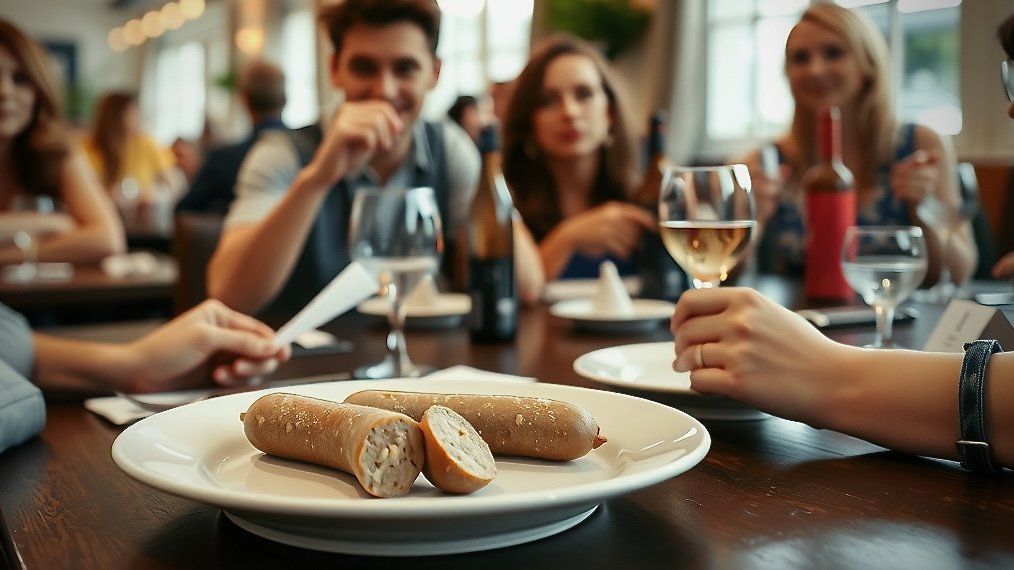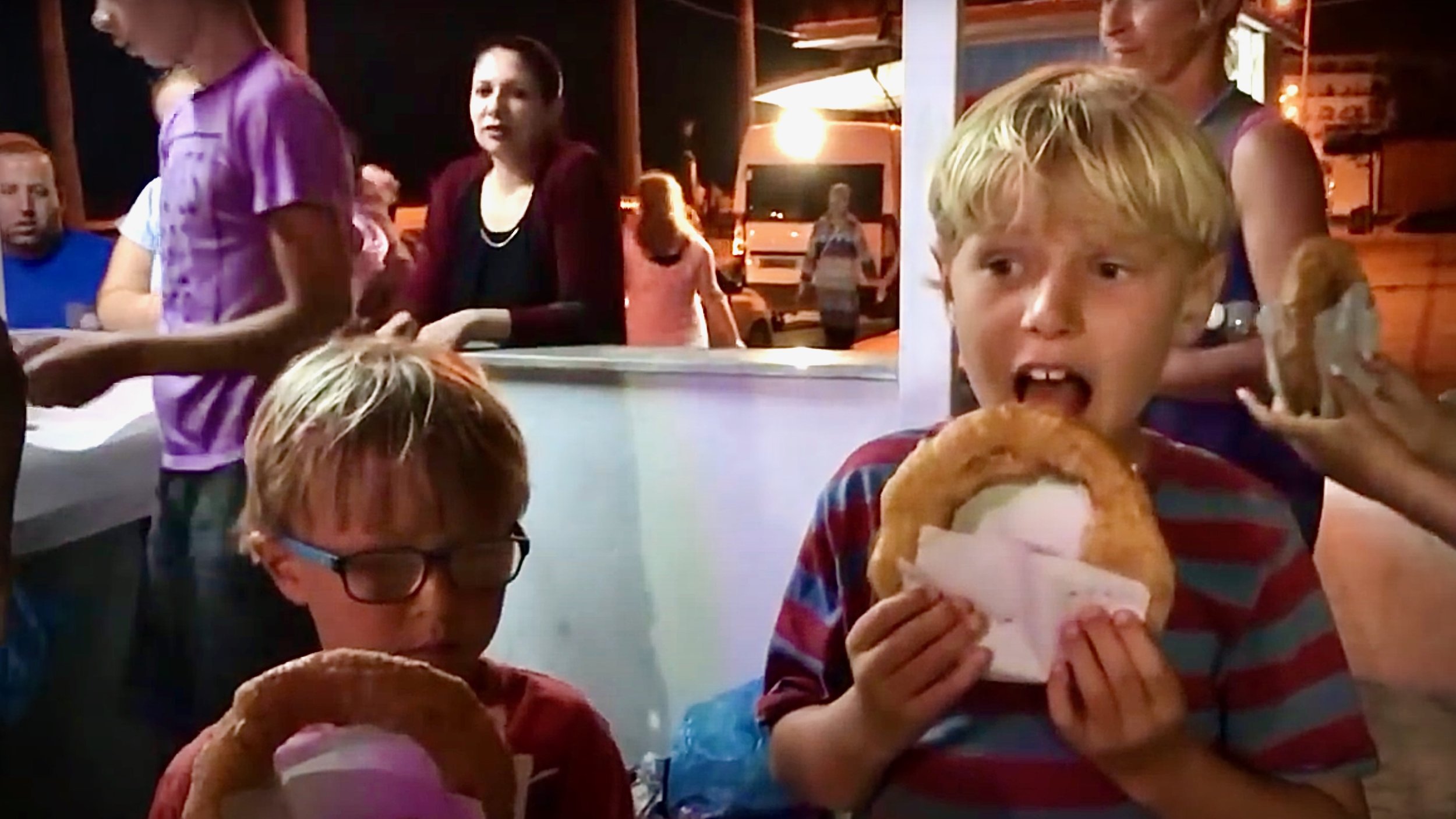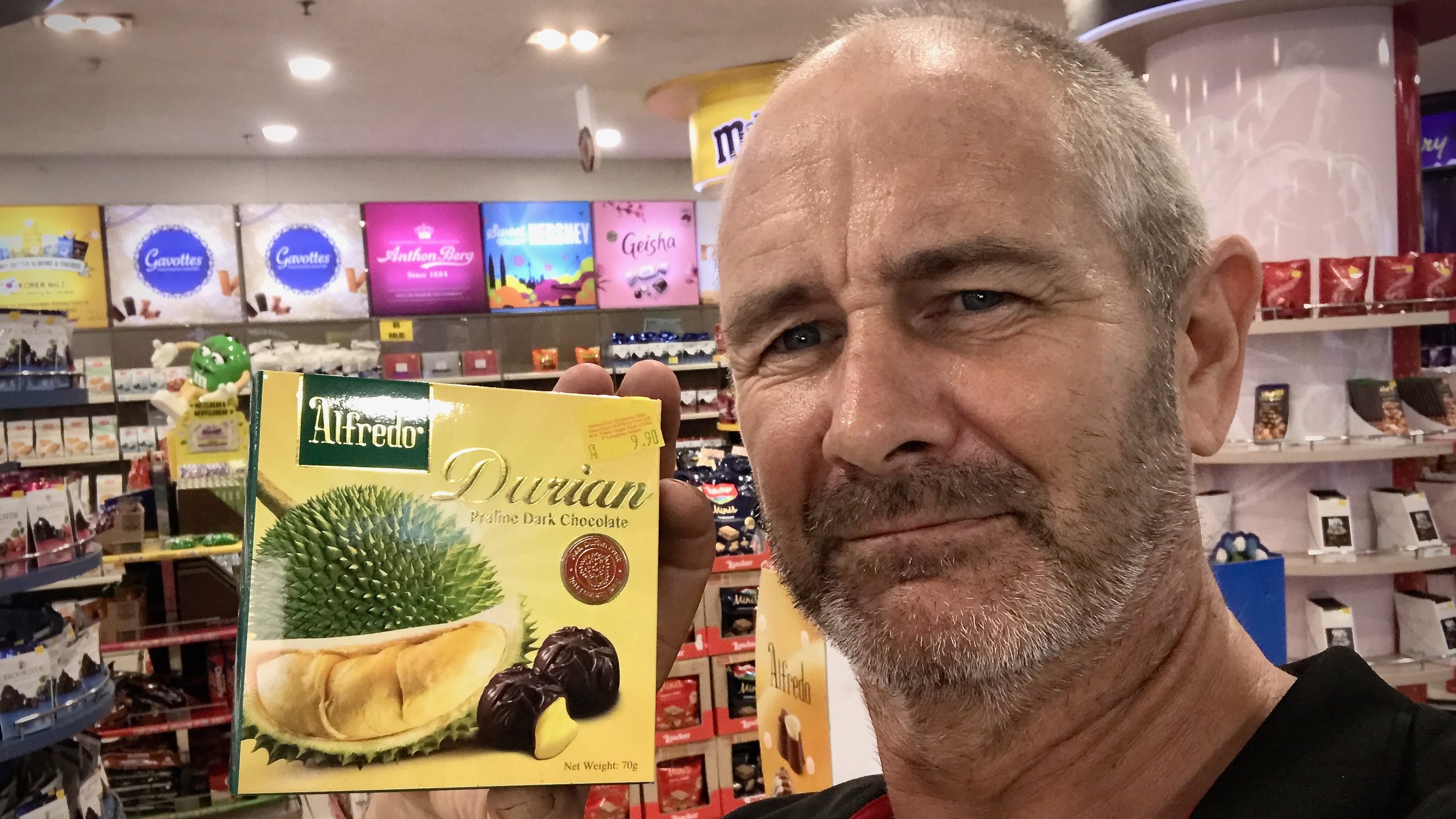Eating Out -Try Everything!
01-03-13
“Part of the secret of success in life is to eat what you like and let the food fight it out inside”
Drinking milk straight form the coconut - San Blas Islands, Panama
I was raised in a typical northern English household in the 1970s with a traditional two-choice menu:
Take it.
Leave it.
So naturally, I grew into an unabashed ‘foodie,’ believing there wasn’t much I wouldn’t try and little I couldn’t stomach. At least, that’s what I thought—until I went to sea.
In the early 2000s, I began my sailing career as part of a delivery crew transporting a beautiful, traditional gaff-rigged cutter to La Rochelle on the west coast of France. To celebrate our modest success, the skipper treated us to a meal at his favourite restaurant. It was my first taste of fine French cuisine, in a time before TripAdvisor, Wikipedia, or Google Translate. (Can you even imagine such a time?) Always eager to try something new, I ordered the andouillette, loosely translated as "small sausage." Which sounded delightful.
French Fine Dining - The innocent looking andouillette is not all it seems
What I didn’t know was that andouillette has, shall we say, a ‘polarising’ reputation. Made from pork intestines and stomach offal, it carries a pungent, unmistakable aroma best described as "barnyard-like." Its texture is equally challenging, with visible pieces of intestine that offer a chewy, slippery bite. This was no French twist on the classic Cumberland or Lancashire sausage I was expecting.
One bite in, my smile quickly turned to bared teeth and a clenched jaw. The half-chewed andouillette made an undignified exit onto the crisp white tablecloth, to the horror of my crew mates and refined French diners.
Fast forward several decades, and fine dining feels like a dim and distant memory. These days, as my family and I circumnavigate the globe, ‘eating out’ is still part of our cultural adventure, although posh restaurants have given way to street vendors, small cafes, and meals shared on the boats of our international cruising community.
Posh restaurants have given way to street vendors, small cafes - A suspicious looking soup in Suriname!
Thanksgiving and Ukrainian Borscht
This week, we joined our American Mormon friends to celebrate Thanksgiving. We’re not religious folk, but we seem to gravitate toward Mormon families as they always have a ton of kids for our kids to play with, and an uncanny knack for finding turkey in the most unlikely places. Despite their aversion to beer and tea (what could be less British?!), we’ve shared some fantastic experiences, from spearfishing in Panama to jungle treks in Colombia.
For the uninitiated, Thanksgiving is like Christmas dinner without presents, carols, or Yorkshire puddings—but with copious amounts of cookies, pie and shouting at armoured rugby players on the TV.
This particular Thanksgiving, did not involve the ‘game' because of time differences between Malaysia and the USA. Nevertheless we celebrated this feast of gratitude with good company in a Malaysian boat yard amid boat parts, grime, and aggressive Long-tailed Macaques!
Thanksgiving in a boat yard. Langkawi, Malaysia
While Thanksgiving at least makes a nod in the direction of gratitude and the more spiritual side of the culinary experience, Ukrainian Borscht by contrast takes a slightly different approach.
The week before Thanksgiving, we were invited by Ukrainian and Russian friends for borscht. Calling it a ‘meal’ doesn’t quite do it justice—it’s a wild, cultural experience involving beer, vodka and Tabasco shots, singing, dancing, and more vodka. The success appears to be evaluated by how many neighbouring boats either complain or join in.
If the end of days ever came, I’d spend Friday making peace with my God via a Thanksgiving meal and Saturday going out with a bang via a Ukrainian borscht. By Sunday, the hangover alone would make the apocalypse feel welcome.
Borscht - not so much of a ‘meal ‘ - more a wild, cultural experience involving beer, vodka and Tabasco shots, singing, dancing, and more vodka! - Langkawi, Malaysia
Adventures in Street Food
Street food is where you truly rub shoulders with local culture. In Tunisia, while repairing our boat in Monastir’s fishing harbour, I developed an addiction to brik, a thin pastry filled with tuna and egg, fried until crispy. I followed it with harissa hilwa—a rich semolina cake soaked in sugar syrup, often flavoured with orange zest or almonds. Paired with Italian-style espresso, it was heaven. While it was cheap, filling and utterly delicious, it did nothing for my productivity in the yard.
Heading back to work often meant dodging feral yard dogs that seemed to consider me part of their midday snack. In fact the boatyard was so dangerous and disgusting that we took cheap accommodation nearby. In the evenings during Ramadan, we’d head into town, and eat bambalouni, a deep-fried, doughnut-like treat. One night we watched on as local stallholders chased down and beat up a thief—a vivid reminder that street food often comes with impromptu live entertainment.
The Tunisian Bambalouni was a favourite with the kids - Ep 023: Boat Lift Haul Out in Tunisia
In Sardinia, the entertainment was more refined. Sampling crispy frittura di sardine from a paper cone at a market, we were serenaded by opera-singing buskers and enchanted by puppeteers. Sardinian vendors, with their passion for food, virtually kidnapped us to try award-winning black pig ham and mozzarella that tasted like it fell from the table of Bacchus himself.
I could go on about Mediterranean food all day, but let’s move on around the world.
Chicken, Iguana, or Caiman?
In the Galapagos, almuerzo is a cheap, traditional midday meal that often starts with chicken soup. But "chicken" includes claws and necks, so you have to just pick them out and suck what little meat there is from the scrawny bones.
In Suriname, the "chicken" soup from a dockside cafe was more ambiguous. Locals clarified there were three types of "chicken": normal chicken (feathered), tree chicken (iguana), and river chicken (caiman). Occasionally, it’s best not to ask too many questions.
River Chicken - Sometimes it’s best not to ask too many questions - Suriname. Ep 103: Tarantula Climbs Arm
However, if you ARE partial to crocodilian meat our Australian cousins are happy to oblige. At Hartley’s Crocodile Adventure in Queensland, we sampled crocodile skewers—mildly exotic, tasting like a blend of fish and.. chicken. Kangaroo meat, by contrast, resembles lean beef, while camel has a mildly sweet undertone apparently reminiscent of horse. (No, I haven’t tried horse unless you count supermarket value beef burgers!)
Lou’s Tea House in Fiji
One highlight of our travels has been Lou’s Tea House on the roadless island of Taveuni, Fiji. After a 40-minute hike along a dirt path, we arrived at this culinary Macca for cruisers. Despite losing her original tea house to a cyclone in 2020, Lou restarted with little more than a deep fryer and determination. Her menu ranges from mud crab curry to donuts and lemon-leaf tea, all served in a breathtaking setting. Always smiling and cheerful she will even turn her entrepreneurial hands to a massage on the beach to ease your weary walking muscles. Just call ahead to see if she needs sugar or flour brought in from the neighbouring island that actually has a shop!
Lou’s Tea House - A culinary Macca for cruisers. Taveuni, Fiji. Ep183: Lifestyle; Off Grid Living and Sustainablity
The Notorious Durian
I began with the polarizing andouillette, but no food is as universally offensive as the durian fruit. Its aroma—best described as smelling like garlic custard in a sewer—is so potent it’s banned in public spaces across Southeast Asia. Friends recently gifted me durian chocolates as a thank-you. They had never tried or even heard of durian before so I insisted we shared the ‘treats’ over a coffee. Once they’d taken that first bite, I watched the familiar and rapid descent through smile, bared teeth, clenched jaw, and.. well you can guess the rest.
Durian Fruit - Tastes like garlic custard in a sewer - Langkawi, Malaysia
Luckily they took it all in good humour. As Seneca said. "He who receives a benefit with gratitude repays the first instalment on his debt.”
Your Favourite Food is Out There - Try everything
Our seven years at sea have been an incredible culinary journey. From Lo’s entrepreneurial spirit in Fiji to the resourceful use of food in Suriname and the Galapagos. From trying kava in a sevusevu ceremony to sharing lobster and lion fish around a beach fire in Panama. Each meal tells a story.
Exploring global cuisines requires a little boldness, a willingness to embrace the unknown, and occasionally enduring an andouillette or durian. More often than not, though, it opens doors to unforgettable tastes and experiences.
As I often tell the kids: Your favourite food is still out there in the world—you just haven’t tasted it yet.
Try everything.









